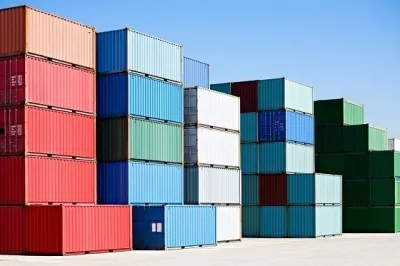Will India’s Pharmaceutical, Textile, and Jewellery Exports to the US Rise Due to the Bilateral Trade Pact?

Synopsis
Key Takeaways
- US is India's largest export partner.
- Potential for increased exports in sectors like pharmaceuticals and textiles.
- Bilateral trade agreement (BTA) expected to be signed by fall 2023.
- India accounts for only 2.7% of US imports.
- Majority of India's exports to US are duty-free.
New Delhi, June 23 (NationPress) While the US currently stands as India’s largest export partner, there exists significant potential for enhanced exports in sectors such as smartphones, specific pharmaceutical products, and labour-intensive sectors like textiles and gems and jewellery under the forthcoming bilateral trade agreement (BTA) expected to be finalized by this fall (September-October), as outlined in a recent Crisil report.
Initially, India should anticipate an increase in imports from the US as part of the BTA. The report indicates that India’s tariffs are considerably higher compared to those in the US, and lowering these tariffs could benefit US exporters.
The report emphasizes that this impending agreement is likely to reduce India’s goods trade surplus with the US.
Post-agreement, India would have the opportunity to import a wider variety of energy products, defence equipment, and certain agricultural products from the US.
Despite this, the report notes that India accounts for a relatively small fraction of the US's imports. A significant surge in Indian exports is unlikely since the focus of the Donald Trump administration is on reducing its trade deficit with India, and most of India’s leading exports to the US are already duty-free (subject to a baseline 10 percent applied since April 10).
Moreover, the potential for export growth will ultimately depend on the comparative tariffs India faces against its competitors.
The report elaborates that there is room for growth. The US is not only the largest economy globally but also the biggest importer. In 2024, US goods imports reached $3.36 trillion, while China and Germany, the second and third largest importers, recorded $2.59 trillion and $1.43 trillion respectively, as per ITC Trade Map.
However, India’s share in the US’s total imports stands at a mere 2.7 percent, indicating potential for increased exports.
The report states, “To identify areas where India can boost exports to the US, we evaluate two essential matrices.”
“Among the top 25 products exported from India to the US, items such as diamonds, marine products, and bed linen have already established a strong presence. In contrast, the penetration of smartphones and certain pharma products remains low.”
Furthermore, only two of India’s top 25 export items faced the most favoured nation (MFN) tariff in 2024, while the rest were duty-free, highlighting the need for Indian goods to become more competitive to capture a larger market share.
While the majority of India’s exports to the US enjoy duty-free status, several products still incur MFN tariffs. For instance, of the $91.2 billion in US goods imports from India in 2024, $32.9 billion worth of goods (36 percent) faced tariffs.
The US imposed reciprocal tariffs on India and several other countries on April 2, 2025, subsequently pausing the increase for 90 days starting April 10 to negotiate trade agreements with these nations (for India, the reciprocal tariff was 26 percent, which is lower than that on many other Asian counterparts).
During this pause, a 10 percent base tariff remains applicable on all countries, including India.






